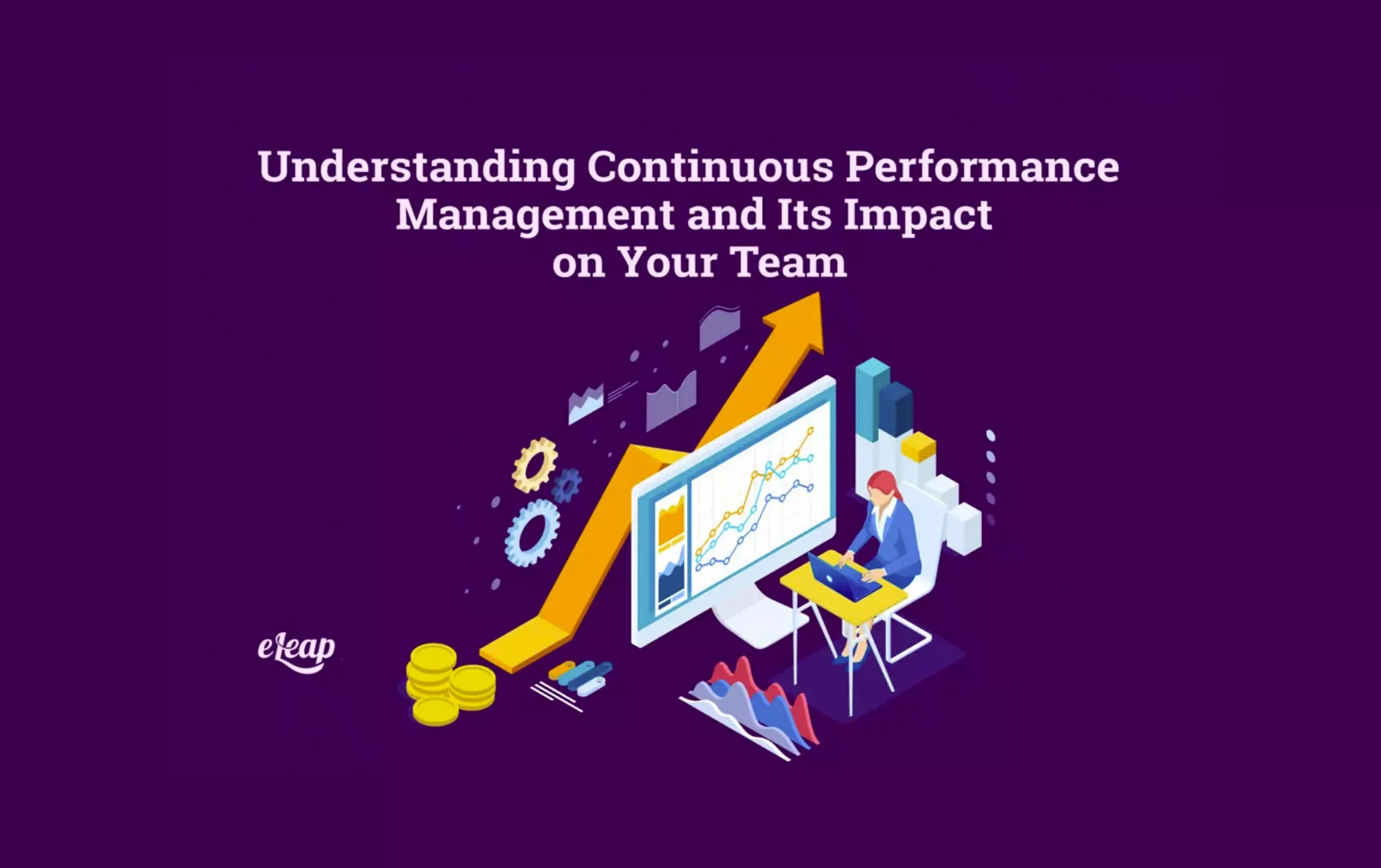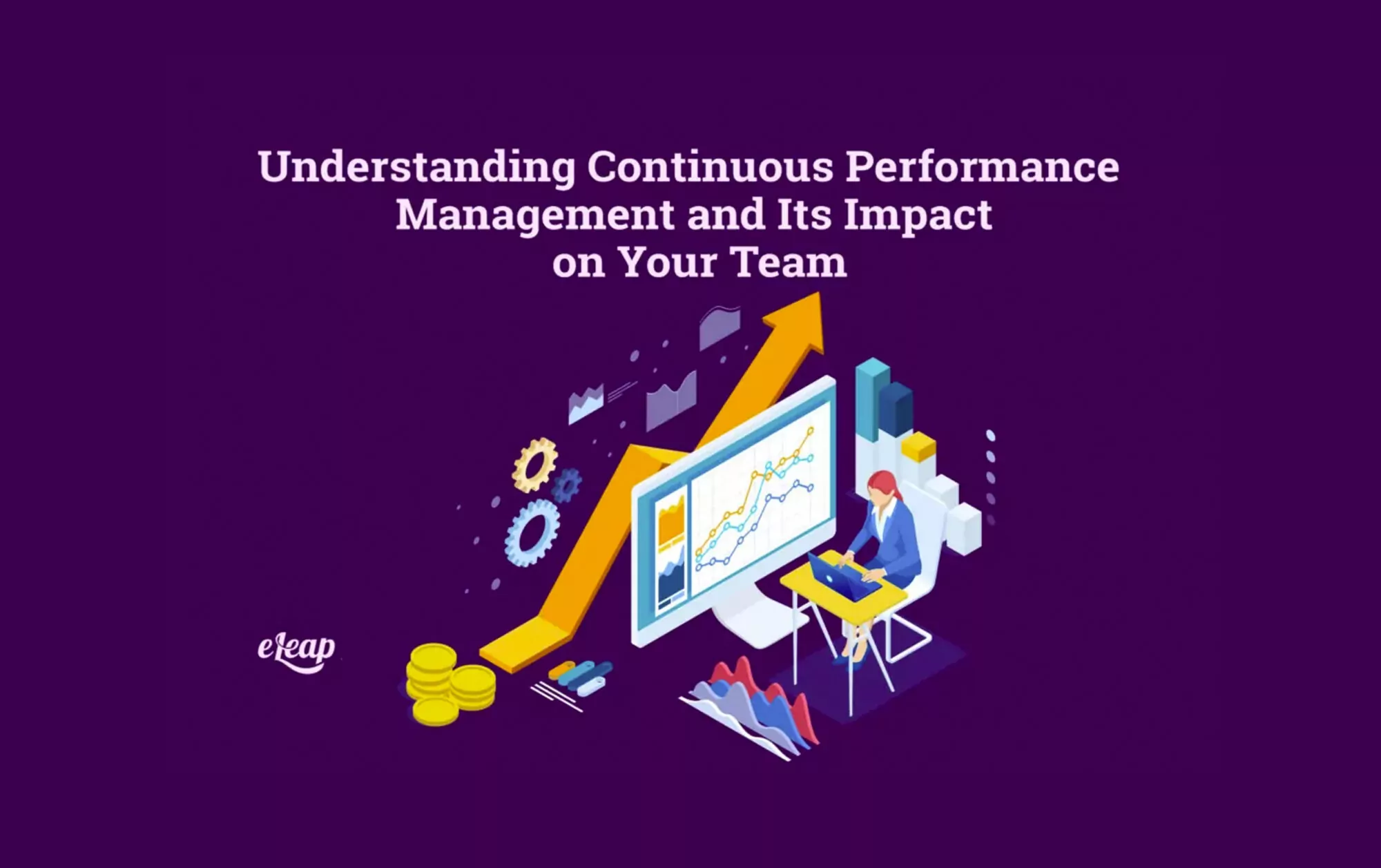Understanding Continuous Performance Management and Its Impact on Your Team

Performance management has been part of the business landscape seemingly forever. For many years, it was a punitive process that focused on the “carrot and stick” method of management in which a reward was dangled in front of an employee to encourage good performance, and that was backed up with the threat of lost income if they failed to live up to expectations.
Thankfully, performance management is evolving into something better. The annual appraisal process is chock-full of flaws. It actually results in decreased employee engagement, increased churn, reduced outcomes, and more.
Continuous performance management is an increasingly popular alternative and offers significant benefits. In this post, we’ll explore what you need to know about this new performance management methodology and what it has to offer.

Continuous Performance Management: What It Is and Isn’t
Continuous performance management is a different take on managing employees. Instead of focusing on annual performance reviews, it takes a multi-touchpoint approach that includes multiple check-ins between the employee and the manager.
What’s a check-in, though? This is an informal, one-on-one meeting between the employee and the manager. They should occur once per month to once every three months. The schedule is flexible to accommodate different needs and goals. The point of check-ins is to provide real-time (or near real-time) feedback on employee performance and behavior.
This addresses one of the single greatest failures of the annual performance review – a lack of viability. When you provide feedback to an employee on performance that might have occurred months ago, it lacks much in the way of relevance. Employees struggle to find actionable ways to implement feedback. It’s also possible for problem behaviors to escalate without ongoing feedback and the opportunity for course corrections.
What’s discussed during these check-ins?
Typically, the manager will talk about progress toward existing goals, as well as any priorities for the employee. Issues and concerns with performance or quality will also be raised, and personal development will be discussed. New objectives will be set (usually when previous objectives have been met, or as a way to break down larger goals into smaller steps). The manager and the employee will also agree on the action points involved in reaching those objectives.
It’s also important to understand that check-ins provide the opportunity for a two-way flow of information. Managers provide feedback to the employee, but the employee is also free to offer their feedback to the manager. This provides the employer with the chance to address problems within workflows, workplace policies, or even company culture that might be exacerbating problems.
Why Should You Use Continuous Performance Management?
Why consider changing your performance management methodology? The single most compelling reason is this: it’s probably not working.
According to SHRM:
- 55% of employees today feel that annual performance reviews are ineffective.
- 30% of employees receiving negative performance reviews immediately begin looking for other jobs.
- Only 10% of employees felt “engaged” after an annual performance review.
Annual reviews are out of context, often irrelevant, disconnected, and usually perceived as threatening or punitive. They certainly don’t do much in the way of engaging employees, nor do they achieve the desired goal of changing behaviors to improve performance. That’s often because annual and semiannual reviews simply come too late to do much good. To effectively change behavior, you must engage in ongoing communication, with real-time feedback that’s couched in growth-focused language, rather than something that can be perceived as a threat.
Continuous performance management does all that and more. However, there are other reasons to consider changing your methodology, including the following:
- The pressures and constraints on businesses are evolving faster than ever, often changing daily. Continuous performance management allows managers to address those changes with employees as they occur, rather than taking a retroactive stance.
- Customer expectations change frequently and regular check-ins help ensure that the team is always on the same page in terms of how to live up to those expectations and deliver an ideal experience.
- Decisions must be made faster today. Regular check-ins allow managers and employees to communicate, share information, and make more accurate decisions rapidly.
- Today, employers need their team members to be empowered and engaged. Continuous performance management helps achieve that while also strengthening workplace relationships and creating a more cohesive whole.
What’s In It for You?
Still not convinced that continuous performance management is the best choice for your organization? Let’s look at what’s in it for you:
- Improved financial performance
- Higher returns
- Improved employee performance and productivity
- Reduced employee turnover
- Improved employee engagement
- Improved overall efficiency
- Time and cost reductions by eliminating the management and form-filling involved with annual reviews
Is the Annual Performance Review Dead?
If you shift to using continuous performance management, should you continue with annual performance reviews? There is really no need. Everything covered in an annual review can be covered through regular check-ins. That means annual reviews would be redundant – a waste of time and money.
You might need to change your mindset if you are on the fence about ditching annual performance reviews. Remember that performance management is ultimately about supporting your employees and helping them grow and succeed. Regular feedback and ongoing conversations are the best ways to do that.
If you’re concerned about how to collate performance-related information to power your pay and promotion decisions, that can be handled in other ways. Managers conducting regular check-ins are in a prime position to offer that information to HR. Simply surveying them with talent-related questions can give HR all the information necessary to make informed decisions regarding pay increases and job promotions, particularly when this information is coupled with data gleaned from employee training and development initiatives.
Continuous Performance Management Is the Way Forward
As you can see, the annual performance review is dead, although some organizations have not yet realized it. Continuous performance management offers a collaborative, positive way to provide ongoing feedback and real-time course correction for employees, while simultaneously boosting performance, productivity, engagement, and loyalty.